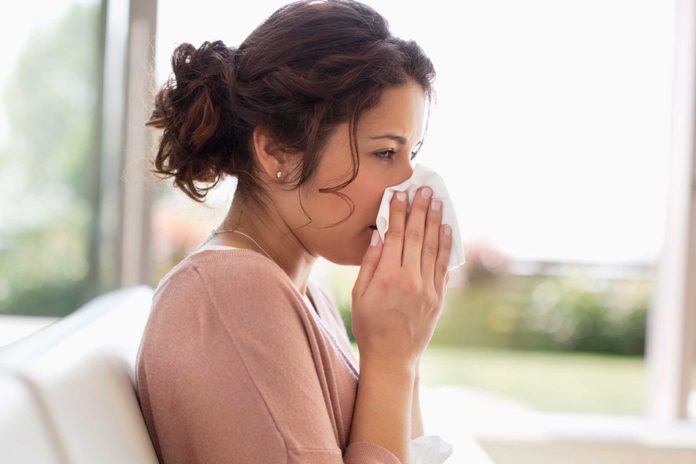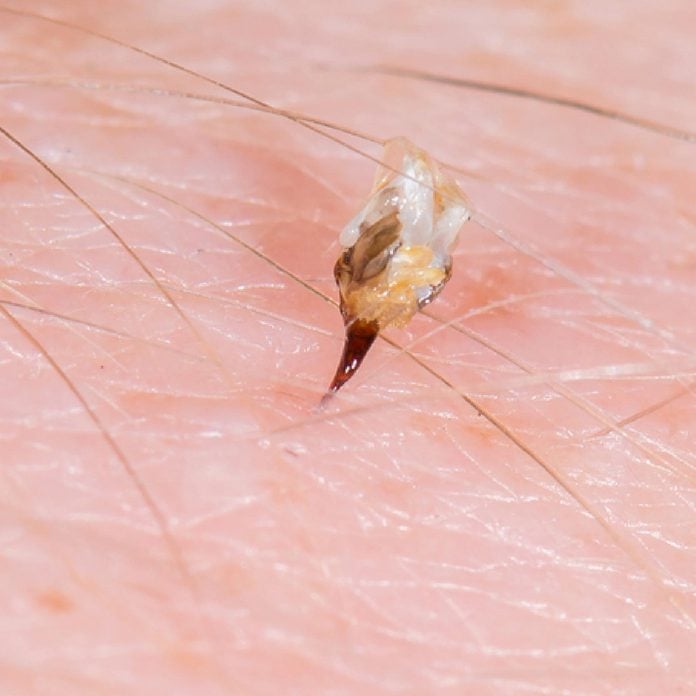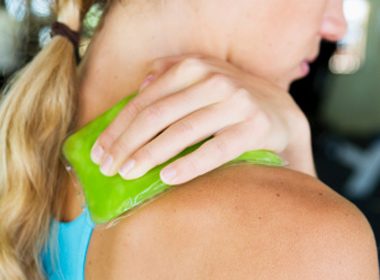
Look for Allergic Reactions
Watch for unusual swelling or difficulty breathing. Fortunately, less than 1 percent of people have severe allergic reactions to bee stings, and only 3 percent experience moderate allergic reactions. But if you see swelling or have difficulty breathing, head to the hospital immediately. Plus, are you not sure what bit you? Here’s how to identify bug bites.

Remove Stinger With Caution
As quickly as you can, remove the stinger. Scrape it out as close to the skin as possible with a fingernail, credit card or knife. Don’t squeeze because you’ll just release more venom. Use tweezers or pull it out.
Never get stung again! Learn these six tips to avoid insect bites and stings.

Tenderize to Reduce Pain From Venom
If you have meat tenderizers in the kitchen, make a pack with ice water and apply it to the sting area for 10 minutes. The enzyme in the tenderizer (papain) will break down the venom. The same enzyme is in papaya, too. If you happen to have one handy, apply a small slice.
In a pinch, apply toothpaste. It’s among the world’s best home remedies for bee-sting relief. Calamine lotion also works great.

Reduce Inflammation With Antihistamine
Take 25 to 50 milligrams of oral Benadryl. The antihistamine will help reduce your body’s attack against the venom, reducing swelling and itching. Plus, here’s how to deter bees and wasps (and identify which is which).

Press on Some Ice
Apply ice wrapped in a cloth to the sting for 20 minutes at a time. The cold constricts blood vessels, slowing the spread of the venom while numbing the pain and itching. Don’t miss these 11 natural bug repellents worth trying.
Next, check out the most dangerous bugs you need to watch out for.